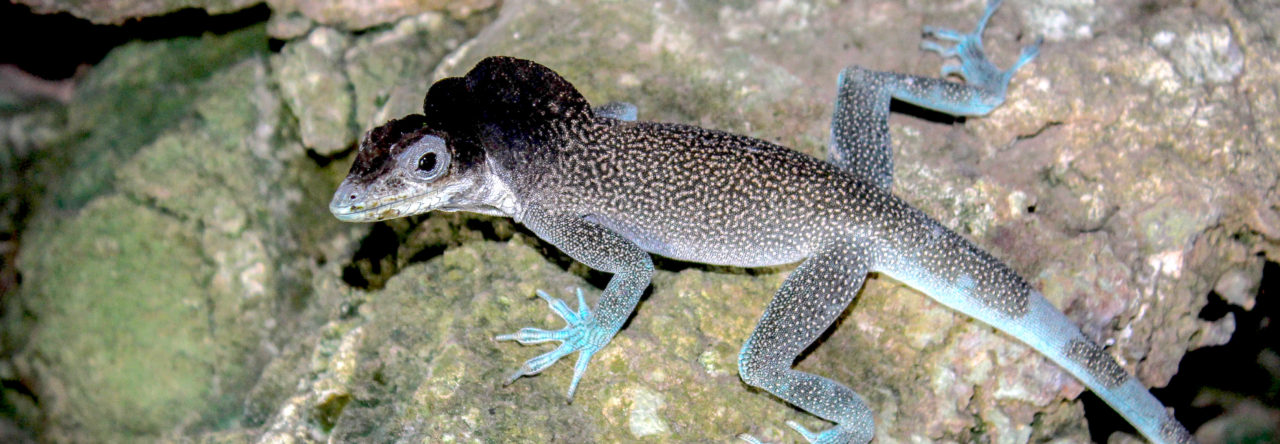The doyenne of Brazilian herpetology, Paulo Vanzolini died two days ago at an age of 89. Renowned for his herpetological expertise, Vanzolini was even more famous for his samba compositions. Indeed, his Wikipedia page focuses more on his music career and discography than his zoological contributions, an oversight that perhaps Wikipedia-savvy AA readers can rectify.
 With regard to anoles, Vanzolini made two important contributions in collaboration with Ernest Williams. The first was their monographic treatment of variation in the mostly-Amazonian Anolis chrysolepis species complex, a group that was recently revised by D’Angiolella et al. This monograph was notable not only for its detailed study of geographic variation, but also for its suggestion that speciation may be prompted by climatic cycles that lead to contraction of populations into isolated, allopatric pockets of suitable habitat. This hypothesis was suggested simultaneously and independently of the same suggestion for Amazonian birds by Haffer and led to the influential and much-debated Pleistocene Refugia hypothesis, discussed previously in AA‘s pages.
With regard to anoles, Vanzolini made two important contributions in collaboration with Ernest Williams. The first was their monographic treatment of variation in the mostly-Amazonian Anolis chrysolepis species complex, a group that was recently revised by D’Angiolella et al. This monograph was notable not only for its detailed study of geographic variation, but also for its suggestion that speciation may be prompted by climatic cycles that lead to contraction of populations into isolated, allopatric pockets of suitable habitat. This hypothesis was suggested simultaneously and independently of the same suggestion for Amazonian birds by Haffer and led to the influential and much-debated Pleistocene Refugia hypothesis, discussed previously in AA‘s pages.
Vanzolini and Williams had a follow-up paper that is less well-known, but equally insightful and ahead of its time. In this paper, the authors argued that such refuges might be particularly important foci of adaptive evolution and speciation when they disappear entirely. The argument is that populations might be trapped in refuges and as the habitat continues to deteriorate over time, the populations might have no choice but to adapt or perish. In this way, arguing from the chrysolepis complex as well as from other lizards, dry forest or even grassland species might evolve from wet forest ancestors. This hypothesis could explain the existence of closely-related species occupying very different habitats–the antithesis of what is now known as phylogenetic niche conservatism–and even might explain the parapatric distribution of close relatives if the new species expanded its range (see previous post for more discussion). This idea was published in Papéis Avulsos de Zoologia in 1981 .(download it here) and deserves more attention than it has received.
- Evolution in Real Time on Lizard Island - March 23, 2025
- Spider Snags Adult Anolis osa - March 22, 2025
- An Homage to the Green Anoles of New Orleans - March 21, 2025


Annelise D´Angiolella
An expressive loss to herpetology and brazilian music… unfortunately, I haven´t got the chance to meet him personally….
Tony Gamble
Paulo Vanzolini’s influence is felt by anyone working on herps in South America and will continue for a very long time. He left quite a legacy.
Interestingly, he was not only a scientist and musician but also a historian of science, e.g. his introduction to the SSAR reprint of Spix and Wagler’s “Herpetology of Brazil”. There was a nice retrospective of Vanzo’s contributions to the history of science in História, Ciências, Saúde-Manguinhos a few years ago that is worth a read.
The scientist as historian: Paulo Vanzolini and the origins of zoology in Brazil
Levi Gray
It’s fitting that the most impressive anole species I have seen, Anolis vanzolinii, was named after Paulo.